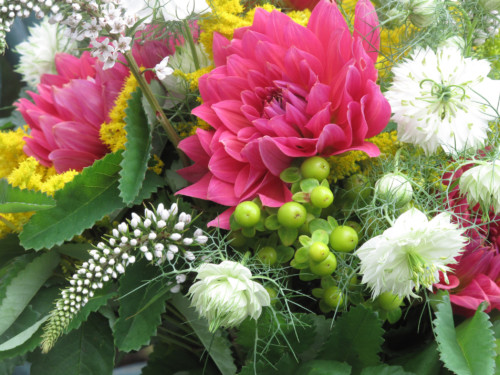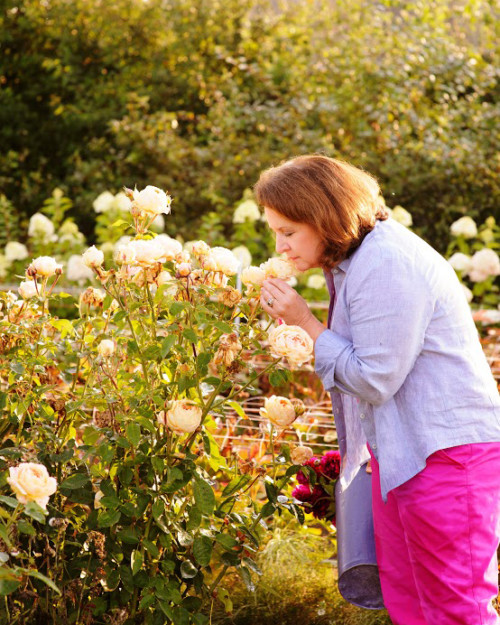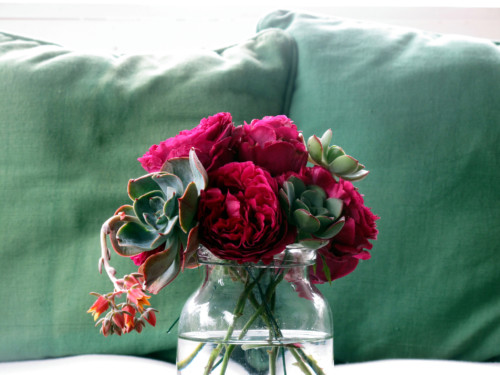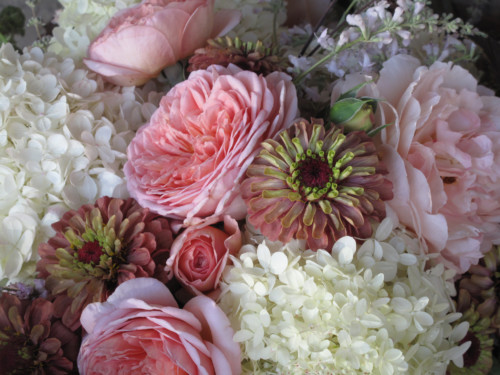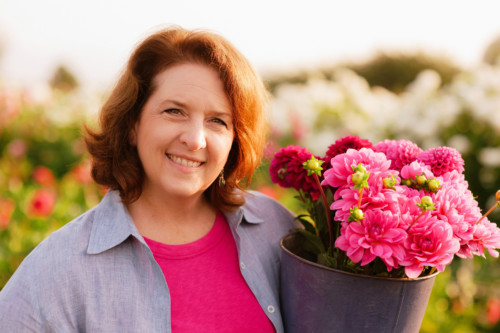
Debra Prinzing and the Slow Flower Movement
Where do your flowers come from, beyond the brick-and-mortar storefront you frequent for vibrant blooms? This is the question that Debra Prinzing, Seattle-based garden journalist, author, and founder of Slow Flowers recently planted in my head.
Prinzing– an avid gardener herself– has memories of flowers that date back to her maternal grandfather growing Dalia’s when she was three. Today, she’s pioneered a movement that confronts these truths: 74 percent of consumers don’t know the origins of their flowers, 58 percent of U.S. flower farms have gone out of business since 1992, mostly due to low-cost imports, and 80 percent of flowers purchased in the U.S. are now imported, which means that American’s profit only $496.2 million of the 7-8 billion dollar retail industry that cut flowers yield– that’s a mere 7 percent.
Below, we speak to Prinzing about her career and American Flowers Week, which will take place again this year from June 28th to July 4th.
Garden Collage: What is your earliest memory of plants and flowers?
Debra Prinzing: Memory is such an elastic thing, but I have vivid young memories of my maternal grandfather, whose name was Daniel Ford. He was a Dahlia grower, just a hobbyist in Indiana. I remember trailing behind him in the backyard– I must have been four or five, and I was mesmerized by two things that he was good at: one being Dalia’s, and the other being prize-winning pigeons. He was a farmer stuck in a city job post-depression. Those Dalia’s made a huge impression on me because they were just so perfect– kind of like how a child would draw a flower. Even younger than that, there are family photos of me at three holding a watering can and watering flowers in my mother’s garden. Even then I was tending to a garden and being wooed by flowers.
GC: When did you start working with flowers?
DP: To be truthful, flowers did skip a generation. My grandparents were gardeners but my parents were not. My real embrace of gardening happened when I was right out of college at the first house we bought in my late twenties. I worked at an architectural textile design firm as a Marketing Director, and one of my best friends there was an avid gardener and then my college roommate was a landscape designer. These two women, Karen and Jean, became my garden muses. They brought me along into this education of what plants grew well in Seattle, and taught me how to build a landscape, how to choose trees, how to understand the seasons, and that reset the course of my career.
GC: What was your garden like in your first home in Seattle?
DP: It was a little bungalow. There were basically no plants because a contractor had scraped the yard, so I began as a lot of people do with containers. That, in a way, is a microcosm of landscape design, so if you can design a beautiful container scale-wise you can blow that up and use it as inspiration for a garden.
I spent a lot of time in that garden growing ornamentals. I was never that passionate about growing edibles, so it was mainly trees and shrubs, perennials, and groundcover. It was such a beginner garden, but the garden that followed was designed alongside my garden muses and I learned what works best in the Pacific Northwest. Back then I would cut flowers from the garden and make bouquets, but I never considered myself a floral designer. I just thought, “Let’s bring this beautiful hydrangea bloom or this rose bloom into the home”. So, I got into DIY floral design by being a gardener.
GC: Do you have a favorite flower?
DP: Every season I have another favorite. Sometimes I say gardenias because that was my wedding bouquet, but that’s unrealistic for me in Seattle to think that I could ever grow a gardenia. I think old fashion English garden roses are my favorite.
A signature rose in a garden that I had for eight years was a David Austin Rose called Abraham Darby. It’s pastel peach in color and there are so many petals in each bloom. It’s just one of those fluffy and distinctive garden roses with a beautiful fragrance.
GC: How did the Slow Flower Movement begin?
DP: In 2006, I started meeting flower farmers here in the Pacific Northwest and hearing about what they were up against, relating to competition from imports. I had never connected the dots between the flowers I grow and the flowers I saw at the grocery store before then. I assumed they were local– they grew in my garden, so if I saw them in a cellophane wrap, I assumed someone must be growing them locally.
When I started learning that it was simply not the case I kept hearing new stories (that echoed this) and because of my business reporter training, I started seeing this as a small business issue. These people have an uneven playing field for sustaining their businesses and if I could help tell their story to a broader audience, I thought I could help change people’s opinions about where their flowers come from. That all was very much a side gig for a long time.
I would try to get every editor that I worked for to let me do stories about flower farming, and eventually that took off. I met a photographer named David Perry in Seattle around that time, and he knew a lot of these flower farmers too, so we decided to start trying to see if there was a book that could be created. We went off on road trips to interview and photograph farmers. We didn’t know what we were doing but that ultimately became a book that came out in 2012 called The 50 Mile Bouquet. That book was sort of a play on the 100 Mile Diet, which is a phrase you hear a lot in the culinary world.
I started a social media campaign in July of 2015 for American Flowers Week. This is modeled after British Flowers Week, which launched in 2013. Australia has since launched Australian Flowers Week, so these are all countries that have pressure from flowers that are being imported. Australia, the U.K., and the U.S. are all kind of in the same situation dealing with local and domestic rural agriculture being threatened, and at the same time their consumer base is starting to ask, “Where do my flowers come from?” in just the same way they’ve already started asking, “Where does my food come from?”
GC: What does American Flowers Week involve?
DP: It’s an advocacy and promotional campaign. British Flowers Week started their campaign with no budget as a social media campaign. They tried to get people to post pictures of British-grown flowers while using their hashtag. That’s run by the biggest flower market in London and the country, the New Covent Garden Market. In the U.S., I’m really relying on my Slow Flowers Tribe to push this out to their platforms.
In 2015, I had an iconic photo commissioned– a floral fashion piece from Susan McLeary— and I launched a website. From 2015 to 2016 we grew from 400,000 impressions in one month to 1.3 million. I had corporate sponsors and gave out labels for CSAs, for bouquets that were being sold at flower marts.
British Flowers Week picked five iconic British-grown flowers and commissioned a famous British florist to do a series of designs with that flower. They do it like a fashion week reveal, revealing that day’s photography of flowers each day. The first time they did this they got Shane Connolly, who did Will and Kate’s wedding. I want to do it with floral fashion, so we’ll have five garments made out of these flowers to reveal this year. We have a sunflower-designed garnet that’s ombre with amaranth grass as the fringe. Holly Chapple also did Dahlia’s for us. The five photos will be embargoed until the 28th of June! We hope to have a lot of people posting and reposting these to change the conversation so that people continue talking about American-grown flowers.
Interested in reading more about the current state of the floral industry? Read our guide on what you can do to change it.


























